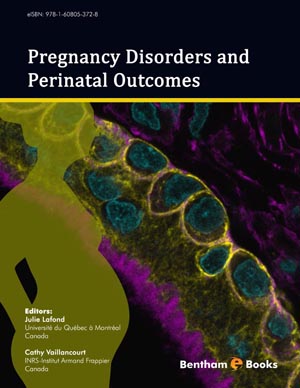Abstract
Human placentation is characterized by the development of a hemochorial placenta and concomitantly by considerable changes in the vasculature of the uterus. The trophoblast is an essential tissue of the placenta. After blastocyst implantation, it differentiates into villous trophoblast, which ensures exchanges between mother and fetus as well as the endocrine functions of the placenta, and into invasive extravillous trophoblasts, which anchors the placenta in the uterus and participate to the implementation of the utero placental vascularization. We describe here the different stages of the placental morphogenesis and the physiological mechanisms responsible for uterine vascular remodeling. We then consider the main functions of the human placenta and in particular the qualitative and quantitative evolution along pregnancy of trophoblast hormonal functions from a paracrine role during the first trimester of pregnancy involved in the quality of placentation to an endocrine role that allows uterine quiescence and maternal adaptation to pregnancy.
Keywords: Syncytiotrophoblast, invasive extravillous cytotrophoblasts, hormones, preeclampsia, fetal growth.






















